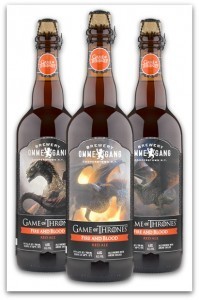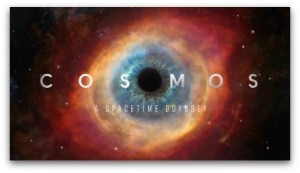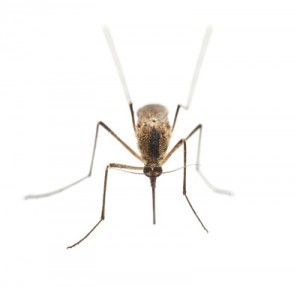Bathroom Readers' Institute's Blog, page 142
March 26, 2014
Klingon Beer, Zombie Beer, Westeros Beer
How do you prove that you’re a true fan of Star Trek, The Walking Dead, or Game of Thrones? Drink these pop-culture-inspired beers.
 The Federation of Beer – as in the United Federation of Planets from Star Trek – has licensed the Star Trek name to create a beer called Roggen Dunkel to be brewed in Indiana. Roggen Dunkel is named after an incredibly potent alcoholic drink consumed by members of the fearsome Klingon race on Stark Trek: The Next Generation and Star Trek: Deep Space Nine. You don’t have to have the hearty constitution of an alien warrior for this beer, however. It’s a Dunkelweizen, a German-style beer made from sweet and rye malts with notes of banana and cloves. This isn’t the Federation’s first Star Trek beer. In 2013, it brewed Vulcan Ale, a beer that was red, like Vulcan, the home planet of Spock.
The Federation of Beer – as in the United Federation of Planets from Star Trek – has licensed the Star Trek name to create a beer called Roggen Dunkel to be brewed in Indiana. Roggen Dunkel is named after an incredibly potent alcoholic drink consumed by members of the fearsome Klingon race on Stark Trek: The Next Generation and Star Trek: Deep Space Nine. You don’t have to have the hearty constitution of an alien warrior for this beer, however. It’s a Dunkelweizen, a German-style beer made from sweet and rye malts with notes of banana and cloves. This isn’t the Federation’s first Star Trek beer. In 2013, it brewed Vulcan Ale, a beer that was red, like Vulcan, the home planet of Spock.
 When you put The Walking Dead next to the idea of consumption, what do you think? Probably “braaaaaaains,” right? You’re not wrong. In advance of this weekend’s fourth season finale of AMC’s incredibly popular zombie drama, Philadelphia’s Dock Street brewery has released a red ale—blood red, actually. Dock Street Walker (“walker” is what characters on The Walking Dead call zombies) is made with cranberries to give it that bloody, gory color. It’s also made with smoked goat brains. Yes. Smoked goat brains.
When you put The Walking Dead next to the idea of consumption, what do you think? Probably “braaaaaaains,” right? You’re not wrong. In advance of this weekend’s fourth season finale of AMC’s incredibly popular zombie drama, Philadelphia’s Dock Street brewery has released a red ale—blood red, actually. Dock Street Walker (“walker” is what characters on The Walking Dead call zombies) is made with cranberries to give it that bloody, gory color. It’s also made with smoked goat brains. Yes. Smoked goat brains.
 For a couple of years, Cooperstown, New York, brewery Ommegang has been brewing two beers based on HBO’s Game of Thrones: Iron Throne Ale (and ale) and Take the Black Stout (a dark stout). Going on sale on March 31, a week before the new season starts, Ommegang will introduce its third GOT beer, Fire and Blood Red Ale. “Fire and Blood” is the motto of the show’s House Targaryen, as led by Daenerys Targaryen, “the mother of dragons.” Each bottle depicts one of three different dragons. Collect ‘em all!
For a couple of years, Cooperstown, New York, brewery Ommegang has been brewing two beers based on HBO’s Game of Thrones: Iron Throne Ale (and ale) and Take the Black Stout (a dark stout). Going on sale on March 31, a week before the new season starts, Ommegang will introduce its third GOT beer, Fire and Blood Red Ale. “Fire and Blood” is the motto of the show’s House Targaryen, as led by Daenerys Targaryen, “the mother of dragons.” Each bottle depicts one of three different dragons. Collect ‘em all!
The post Klingon Beer, Zombie Beer, Westeros Beer appeared first on Uncle Johns Bathroom Reader.
March 21, 2014
The Wee Retreat
Because we all want a wee little place down by the sea.
Beachside property can be really expensive, which is why Nick Willan bought a fixer-upper when looking for a vacation house on the U.K.’s eastern coast. But instead of purchasing a cabin with outdated fixtures or an undeveloped plot, Willan chose an old public bathroom in the seaside town of Sheringham. He gave it to his wife, Sue, as a gift for their 30th wedding anniversary. The bathroom wasn’t in the best of shape when Willan signed the paperwork. Nevertheless, he wasn’t the only interested party when it was put up for public auction. The original asking price was $83,000 but he eventually paid around $166,000 for the dilapidated structure.
Turning the bathroom into the sort of place that his wife would be willing to spend a weekend required another $141,000 and several months of hard work over three years. The two-story former pit stop now contains a pair of bedrooms, a kitchen, a living room, and a bathroom that doesn’t feature several broken toilet stalls and murky urinals. Willan also added two small balconies. Sue says she loves the place now and doesn’t regret her husband’s decision in the slightest.
The view from the balconies has been described as “stunning.” Several local rental companies have also contacted the Willans about adding the bathroom to their listings. They haven’t made it available to overnight lodgers just yet but they are planning an open house in April to help raise money for charity. The couple jokingly calls their new seaside cottage “The Wee Retreat.”
P-LOO_ITV2000_Vimeo from ITV Anglia on Vimeo.
The post The Wee Retreat appeared first on .
Fake-or-Fact Friday: A Body of Weirdness Edition
Two of these news items really happened. One of them only happened…in our minds. Can you tell which is the fake? The answer is below.
A.
Comedian Ari Teman decided to rent out his New York apartment for a few days via AirBnB, an online apartment-sharing service. He found a man named “David,” who said he was looking to for a place to stay while he attended a friend’s wedding. Teman went through with the deal, but was concerned enough to stop by. And when he did, he discovered that his apartment was being trashed by the attendees of a “XXX Freak Fest Panty Raid Party.” “David” was charging $20 a head, and the attendees had moved furniture, tossed some outside, and ransacked the place. Air BnB has agreed to reimburse the comic more than $20,000 and has also provided him a place to stay while he looks for new digs.
B.
A California woman is so serious about becoming a human Barbie doll, she’s moved beyond plastic surgery (she’s currently on breast enlargement #5, and a size 32JJ) and has begun hypnotherapy sessions in an effort to become more “brainless.” The 38-year-old, who has changed her name to Blondie Bennett, said in an interview, “I just want to be the ultimate Barbie. I actually want to be brainless. I don’t like being human, if that makes sense.” She claims the treatments are working. “I’ve had 20 sessions and I’m already starting to feel ditzy and confused all the time.”
C.
A man in Portland, Oregon, called police when he discovered the prostitute he’d been having intimate relations with, who he’d met at a local drag club, was a man. Earl Walker told the dispatcher, “This [redacted] was [redacted] my [redacted], and it was real nice, but I reached down and she had a [redacted] [unintelligible]. I should have [redacted] known.” Walker told the dispatcher the name of the club where he’d met the prostitute and gave the dispatcher his home address. Twenty minutes later, officers arrived at his home, found the front door open and Walker unconscious on the sofa. He was arrested for solicitation and possession of unlawful prescription drugs.
Want more fakes? Check out Uncle John’s Fake Facts. (Really!)
The post Fake-or-Fact Friday: A Body of Weirdness Edition appeared first on .
March 20, 2014
The Mystery of Seattle’s Mystery Coke Machine
Seattle has long been a proudly weird place, but one of its weirdest elements is a vending machine. Really.
 About 25 years ago, young hipsters and budding rock stars flocked to Seattle’s Capitol Hill district, a hotbed of cheap rents, dive bars, and low-key coffeehouses. Its threadbare ambiance directly gave rise to the city’s “grunge” scene in the late ‘80s, which defined rock music in the ‘90s. But that was a long time ago—today Capitol Hill is still one of Seattle’s hippest neighborhoods, but also one of its most expensive.
About 25 years ago, young hipsters and budding rock stars flocked to Seattle’s Capitol Hill district, a hotbed of cheap rents, dive bars, and low-key coffeehouses. Its threadbare ambiance directly gave rise to the city’s “grunge” scene in the late ‘80s, which defined rock music in the ‘90s. But that was a long time ago—today Capitol Hill is still one of Seattle’s hippest neighborhoods, but also one of its most expensive.
But there’s one thing on the Hill that remains which echoes its raggedy past. Nobody knows who did it, or even why, but there’s an old Coca-Cola vending machine sitting at 918 East John Street. It’s kept stocked, but nobody is exactly sure how.
The locals call it Seattle’s Mystery Coke Machine. It dispenses cans of soda for only 55 cents a can, way below the dollar or so you’d pay elsewhere in Seattle in 2014, and the same price Eddie Vedder might have paid when he lived on Capitol Hill in the early ‘90s. The battered machine’s elusive operators keep it stocked with popular brands like Coca-Cola Classic and Barq’s Root Beer. There’s also two “Mystery” buttons that provide customers with random, hard-to-find, or even discontinued sodas, such as pineapple Fanta and Mountain Dew Code Red.
The vending machine has been there for well over a decade. The most likely benefactor is a nearby locksmith shop. For more information, check out the Mystery Coke Machine’s Facebook page. (Yep, it has a Facebook page.) If you know who’s behind the mystery, definitely drop us a line. We’d love to find out.
The post The Mystery of Seattle’s Mystery Coke Machine appeared first on .
Impossible Questions: That Big Year Edition (The Answer)
All of those things have happened after the last time the Chicago Cubs won a World Series.
It’s almost opening day of the Major League Baseball season, and with it comes baseball pundits, writers, and fans wondering if this year will finally be year the Cubs can finally win it all…again. In the early 20th century, the Cubs were one of the most dominant teams in the league. From 1906 to 1910, the Cubs appeared in the World Series four times and won twice. The 1908 championship marks the Cubs’ last championship. (The last time they went to a World Series—and lost—was in 1945).
Obviously, in the 105.5 years from then until now, the world has changed a lot. Here are some examples.
In 1920, Congress passed the 19th Amendment to the Constitution, which gives women the right to vote.
The Ottoman Empire disbanded in 1923 after more than 600 years. It’s replaced by modern-day Turkey.
In 1977, France executed its last convicted murderer with the guillotine. Four years later, the country abolished the death penalty altogether.
When the Cubs won the 1908 World Series, there were 46 states in the Union. New Mexico and Arizona became states in 1912, four years later. Alaska and Hawaii were granted statehood in 1959, more than 50 years later.
Packaged, pre-sliced bread was introduced in 1928.
Pluto was discovered by astronomers in 1909 and classified as the ninth planet in the Solar System, as well as the smallest and most distant from the sun. In 2006, Pluto was demoted to dwarf-planet in 2006. That means the entire “life cycle” of Pluto has been contained entirely within the Chicago Cubs’ championship drought.
Bonus: Since the Cubs won a World Series, 22 other Major League Baseball teams have won a World Series. The New York Yankees have won it 26 times.
The post Impossible Questions: That Big Year Edition (The Answer) appeared first on .
March 19, 2014
Exploring the ‘Cosmos’
With Neil DeGrasse Tyson’s modern-day reboot of Carl Sagan’s 1980 documentary series doing so well, here’s a look back at the original, which was a surprising pop culture phenomenon.
 “Cosmos” is a Greek word that literally means “order.” In science, however, it means “the universe” or “everything, including space, atoms, and everything in between. Cosmology is thus the study of how everything came to be.Cosmos: A Personal Voyage was the brainchild of Cornell University astrophysicist Carl Sagan, one of the most recognizable and influential scientists of the 20th century. In addition to his many books, talk show appearances, and lectures, Sagan helped shape NASA’s Voyager and Viking programs.Inspired by American and British TV documentaries about individual scientific subjects, Sagan wanted to do a story of the cosmos—of absolutely everything. Sagan and producer Ann Druyan (the duo would later marry) took the idea to PBS, who gave Sagan a whopping $6.3 million and two years to make Cosmos.The 13-part series aired in the fall of 1980, and was one of the first documentaries to use special effects, animations, and intricate scale models, all to give the impression of host/narrator Sagan interacting with distant space objects and molecules.It was a huge hit, earning the biggest audience in PBS history (only surpassed since with the 1990 Ken Burns documentary The Civil War). Around the world, it’s still the most watched PBS show ever, reaching 500 million viewers.Sagan’s Cosmos tie-in book of the same name was a hit, too. Each of its 13 chapters correspond to a Cosmos TV episode, and like the show, explain complicated scientific concepts in a simple, but exciting way. It sold five million copies, and until Stephen Hawking’s A Brief History of Time, Cosmos was the bestselling science book of all time. It spent more than a year on the New York Times bestseller list.Even the Cosmos soundtrack was a hit, combining classical compositions with newer music by Greek composer Vangelis (who would go on to score Chariots of Fire).Cosmos was so big, Johnny Carson parodied it (and Sagan’s unique look and speech patterns) on The Tonight Show:
“Cosmos” is a Greek word that literally means “order.” In science, however, it means “the universe” or “everything, including space, atoms, and everything in between. Cosmology is thus the study of how everything came to be.Cosmos: A Personal Voyage was the brainchild of Cornell University astrophysicist Carl Sagan, one of the most recognizable and influential scientists of the 20th century. In addition to his many books, talk show appearances, and lectures, Sagan helped shape NASA’s Voyager and Viking programs.Inspired by American and British TV documentaries about individual scientific subjects, Sagan wanted to do a story of the cosmos—of absolutely everything. Sagan and producer Ann Druyan (the duo would later marry) took the idea to PBS, who gave Sagan a whopping $6.3 million and two years to make Cosmos.The 13-part series aired in the fall of 1980, and was one of the first documentaries to use special effects, animations, and intricate scale models, all to give the impression of host/narrator Sagan interacting with distant space objects and molecules.It was a huge hit, earning the biggest audience in PBS history (only surpassed since with the 1990 Ken Burns documentary The Civil War). Around the world, it’s still the most watched PBS show ever, reaching 500 million viewers.Sagan’s Cosmos tie-in book of the same name was a hit, too. Each of its 13 chapters correspond to a Cosmos TV episode, and like the show, explain complicated scientific concepts in a simple, but exciting way. It sold five million copies, and until Stephen Hawking’s A Brief History of Time, Cosmos was the bestselling science book of all time. It spent more than a year on the New York Times bestseller list.Even the Cosmos soundtrack was a hit, combining classical compositions with newer music by Greek composer Vangelis (who would go on to score Chariots of Fire).Cosmos was so big, Johnny Carson parodied it (and Sagan’s unique look and speech patterns) on The Tonight Show:The post Exploring the ‘Cosmos’ appeared first on .
Impossible Questions: That Big Year Edition
Think you know the answer to this question? Think you can get it? Good luck…and come back tomorrow to see if you’re right.
What major national event precedes women’s voting rights in the U.S., the dissolution of the Ottoman Empire, France phasing out the guillotine, statehood of four states, the discovery of Pluto, sliced bread, and the demotion of Pluto?
Want more impossible questions? Check out Uncle John’s Impossible Questions.
The post Impossible Questions: That Big Year Edition appeared first on .
March 18, 2014
University of Heroes
Recently, we told you about Tim Draper’s crazy scheme to chop up California into six separate states. We held back a bit more of the story – how Draper founded a very, um, unique private college.
 In 2013, venture capitalist Tim Draper funded and founded the Draper University of Heroes, an as-yet-to-be-accredited college geared toward training young entrepreneurs and wannabe tech moguls. Draper’s main inspiration: Hogwarts, the magical school for aspiring wizards featured in the Harry Potter books and movies. Students at the unfortunately acronymed D.U.H. don’t fly around on brooms or attend classes in a massive castle, but they do get to attend them in a converted hotel in San Mateo, California.
In 2013, venture capitalist Tim Draper funded and founded the Draper University of Heroes, an as-yet-to-be-accredited college geared toward training young entrepreneurs and wannabe tech moguls. Draper’s main inspiration: Hogwarts, the magical school for aspiring wizards featured in the Harry Potter books and movies. Students at the unfortunately acronymed D.U.H. don’t fly around on brooms or attend classes in a massive castle, but they do get to attend them in a converted hotel in San Mateo, California.
Nor is life at D.U.H. (we can’t help it) boring. The school is private and unaccredited, so it can afford to be a little experimental. Students use bean bag chairs instead of desks, and hallways are lined, floor-to-ceiling, with dry erase boards, as “inspiration can strike at any moment.” And then there’s a campus building called “Hero City,” which is just the fancy name for a bunch of study spaces were current (and former) students can hang out and develop the next Facebook or Google. Further, students are required to recite a daily oath, encouraging them to focus on branding and to “promote freedom at all costs.” The recitation takes place in front of portraits of Bill Gates and Thomas Edison.
Field trips to local go-kart tracks and Google headquarters aren’t uncommon. Students can pay their tuition in cash or the online currency Bitcoin…if they don’t want to barter or sign up for a payment plan that garnishes their future wages. Classes run seven days a week and it takes the average student about 15 months to graduate.
If all of this wasn’t weird enough, graduation day at the university is more than a little strange. Instead of diplomas, students receive masks and capes printed with their superhero nicknames. During the ceremony, each student jumps on a row of trampolines while yelling “Up, up and away!”
The post University of Heroes appeared first on .
More Cowbell!
The “More Cowbell” sketch aired on Saturday Night Live in 2000, and is one of the most famous in the show’s history. It’s set up as a mock episode of the documentary show Behind the Music, set at a recording studio as Blue Oyster Cult records its cowbell-heavy 1976 hit “(Don’t Fear) The Reaper.” But how accurate is it?
 The sketch presents the song as being produced by a hotshot music industry player named Bruce Dickinson (portrayed by guest host Christopher Walken). In reality, “(Don’t Fear) The Reaper was produced by Blue Oyster Cult’s manager, Sandy Pearlman. Strangely, a man named Bruce Dickinson actually has worked with Blue Oyster Cult – he remastered their back catalog for greatest hits collections.The centerpiece of the sketch is Will Ferrell’s portrayal of Blue Oyster Cult’s emotionally fragile and underused cowbell player, Gene Frenkle. This has never been such a person in Blue Oyster Cult.Curiously, the sketch has caused the world to hear the song differently. The cowbell is not as pronounced as the sketch makes it out to be. However, it was initially recorded so low that it was barely audible on the finished track. The band recorded Albert Bouchard, brother of bassist Joe Bouchard, to record a new cowbell track after the fact. The first, subpar cowbell part had been performed by BOC’s lead singer Eric Bloom.In the sketch, lead singer Eric Bloom is depicted as singing the song (played by Chris Parnell). But Bloom didn’t actually sing “(Don’t Fear) The Reaper. Lead guitarist Donald Roeser wrote the song and sang lead. In fact, the two best known BOC songs (“Reaper” and “Burnin’ For You”) were both sung by Roeser. However, Parnell’s character looks like Roeser. In the sketch, Roeser, as the lead guitarist, is portrayed by Chris Kattan.
The sketch presents the song as being produced by a hotshot music industry player named Bruce Dickinson (portrayed by guest host Christopher Walken). In reality, “(Don’t Fear) The Reaper was produced by Blue Oyster Cult’s manager, Sandy Pearlman. Strangely, a man named Bruce Dickinson actually has worked with Blue Oyster Cult – he remastered their back catalog for greatest hits collections.The centerpiece of the sketch is Will Ferrell’s portrayal of Blue Oyster Cult’s emotionally fragile and underused cowbell player, Gene Frenkle. This has never been such a person in Blue Oyster Cult.Curiously, the sketch has caused the world to hear the song differently. The cowbell is not as pronounced as the sketch makes it out to be. However, it was initially recorded so low that it was barely audible on the finished track. The band recorded Albert Bouchard, brother of bassist Joe Bouchard, to record a new cowbell track after the fact. The first, subpar cowbell part had been performed by BOC’s lead singer Eric Bloom.In the sketch, lead singer Eric Bloom is depicted as singing the song (played by Chris Parnell). But Bloom didn’t actually sing “(Don’t Fear) The Reaper. Lead guitarist Donald Roeser wrote the song and sang lead. In fact, the two best known BOC songs (“Reaper” and “Burnin’ For You”) were both sung by Roeser. However, Parnell’s character looks like Roeser. In the sketch, Roeser, as the lead guitarist, is portrayed by Chris Kattan.The post More Cowbell! appeared first on .
March 17, 2014
AUJA – What’s the Point of Mosquitos?
Uncle John knows pretty much everything—and for what he doesn’t know, he has a massive research library. So go ahead: in the comments below, ask Uncle John anything. (And if we answer your question sometime, we’ll send you a free book!)
What purpose do mosquitos serve? They bite. They suck blood. They spread disease. So what’s the point of mosquitos anyway? Those things are the point.
They bite. They suck blood. They spread disease. So what’s the point of mosquitos anyway? Those things are the point.
Mosquitos spread viruses and parasites through the animal kingdom (not counting humans). That naturally helps control the population of animals, keeping ecological balances in check.
Sure, it’s definitely a problem when they throw off the ecological balances of humans by spreading horrible diseases like dengue fever, West Nile virus, malaria, and yellow fever. But mosquitos aren’t in and of themselves filthy, disease-carrying creatures. They spread pathogens, but have to feed on an infected animal to get that pathogen. Studies show that mosquito colonies that live entirely in a pond and feed off algae and bacteria and don’t interact with humans (other than those researchers of course) carry no infectious disease.
And while you probably know that a lot of animals eat insects, it’s somewhat surprising that mosquitos are part of the food chain. Fish and predatory insects eat mosquito larvae. Living things such as bats, birds, dragonflies, and spiders eat the flying, or adult version of mosquitos.
Mosquitos are the deadliest and most annoying insects on earth, but if you eliminated them, it would cause far-reaching havoc on the planet’s fragile ecosystem, right? Not necessarily. In 2010, Nature writer Janet Fang asked this question to a number of scientists. While a sudden lack of mosquitos would kill off the food source for a number of birds in the Arctic tundra – and thus those Arctic birds – other scientists theorize that another, less disease-spreading insect species would eventually fill the hole left by mosquitos.
The post AUJA – What’s the Point of Mosquitos? appeared first on .



